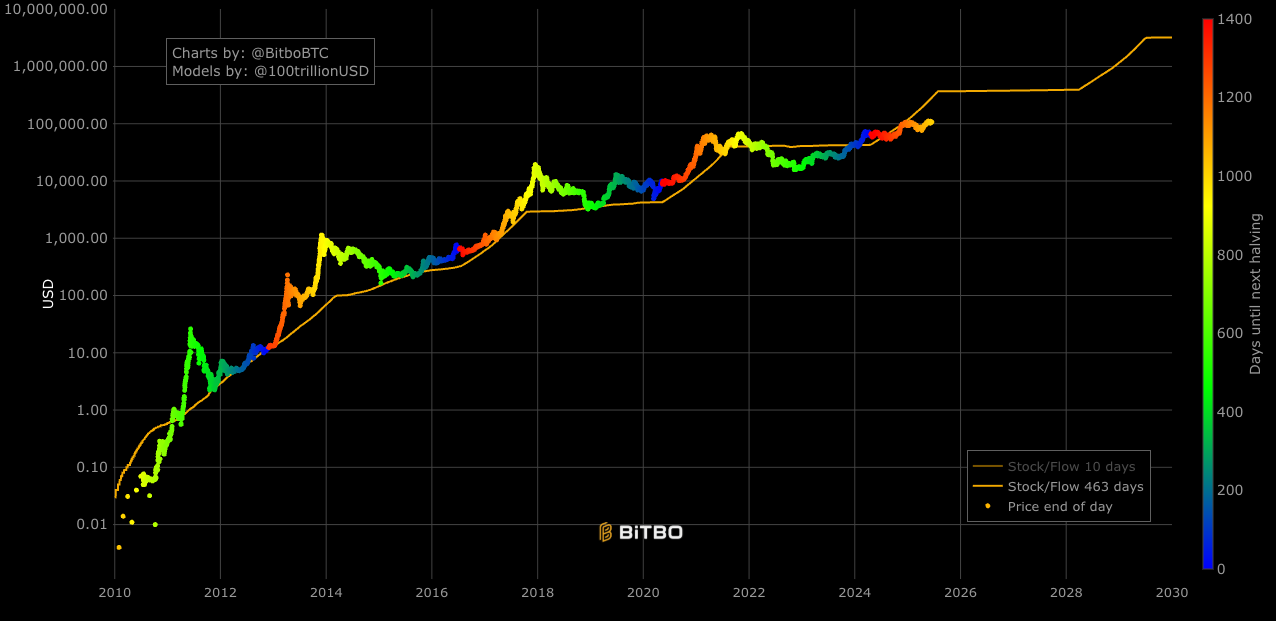The controversial model predicting US$300,000 bitcoin this year
In March 2019, with bitcoin at US$4,000 and in the depths of a prolonged bear market, a twitter user by the name of PlanB published a blog post titled “Modeling Bitcoin Value with Scarcity”.
Using the previous decade’s worth of data on bitcoin’s supply and value, the author predicted that the cryptocurrency would reach a price of around US$55,000 in 2020 or 2021, and was widely ridiculed.
This was at a time when many experts were instead predicting its demise.
Warren Buffett had called bitcoin a “gambler’s device”, US economist Steve Hanke argued “buying bitcoin is a fool’s game”, JPMorgan’s Jamie Dimon called it a “fraud” and business journalist John Crudele declared that “bitcoin will soon be worth zero”.
But in February 2021, just as PlanB had predicted, bitcoin hit US$55,000 for the first time in its history.

There are arguably no assets that have such a well-earned reputation for volatility than bitcoin.
The digital currency, created by the pseudonymous Satoshi Nakamoto in 2009, has enjoyed an inimitable journey over the last decade and a half.
It has been prone to extreme boom and bust cycles that see its price surge to unprecedented levels before suffering huge multi-year drawdowns.
From being worth effectively nothing little more than a decade ago, a single bitcoin is now worth more than US$100,000.
But how do you accurately evaluate an asset that has no real analogue, and doesn’t conform to accepted valuation models?
PlanB, the pseudonymous author who had accurately predicted bitcoin’s last bull run, believed it was possible to model bitcoin’s value and potential price appreciation by applying a scarcity model known as the “stock-to-flow” model.
In the blog post mentioned above, he laid out why bitcoin had value, and why it could be evaluated through a scarcity model.
“Bitcoin is the first scarce digital object the world has ever seen. It is scarce like silver & gold, and can be sent over the internet, radio, satellite etc.” - PlanB
Like gold, and unlike regular government-issued currencies, there is an inherent scarcity to bitcoin.
New bitcoins are “mined” every day, but this rate of production is halved roughly every four years, a process known as the bitcoin halving. In addition, there can only ever be 21 million bitcoin.
And there is a defined cost to producing new bitcoin, mostly in the form of energy and hardware costs.
According to the blog post, this means bitcoin adheres to what Nick Szabo, an influential computer scientist and cryptographer, calls unforgeable costliness.
“What do antiques, time, and gold have in common? They are costly, due either to their original cost or the improbability of their history, and it is difficult to spoof this costliness," wrote Szabo.
“Precious metals and collectibles have an unforgeable scarcity due to the costliness of their creation."
Using this framework, PlanB argued you could therefore try to value bitcoin using its stock-to-flow (SF) ratio, that is, the current total stock divided by the annual production rate of new stock.
The higher the SF ratio, the scarcer an asset is, and the more likely it is to appreciate in value.
To illustrate the point, PlanB quotes economist Saifedean Ammous, who argued that it is the “consistently low rate of supply of gold that is the fundamental reason it has maintained its monetary role throughout human history."
By calculating bitcoin’s SF ratio with its price history, PlanB could then plot its future price movements, including the impact of subsequent bitcoin halvings.
Predicting bitcoin's price

This formed the basis for his accurate prediction back in 2019.
And that model is now predicting a price above US$300,000 sometime this year.
Of course, there are many externalities that impact bitcoin’s price beyond a simple measure of its scarcity.
As bitcoin becomes more mainstream, there is an obvious argument that it will be subject to diminishing returns as new prospective buyers are exhausted.
There’s also the idea that it will stabilise in price as institutional adoption grows, meaning the dramatic bull runs predicted by the SF model would be a thing of the past.
In fact, this is the first time in bitcoin’s history that its price has regularly lagged behind that predicted by the stock-to-flow model.
If the model is to maintain its relevance, the bitcoin price needs to rapidly appreciate.
Interestingly, we are currently in the part of the bitcoin halving cycle where the stock-to-flow model predicts exactly that.
Whether that’s enough to see bitcoin actually hit US$300,000 by the end of this year is the big question.
The conventional wisdom suggests it won’t.
The conventional wisdom has been wrong before.
4 topics

